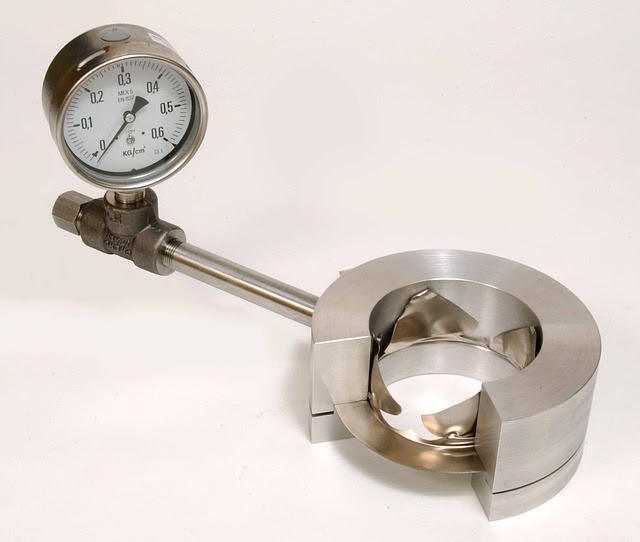
However, that’s not always the case. In 2015, a failed rupture disc caused a 90-m3 vertical cylindrical steel tank to fail catastrophically. It took off like a rocket into the air, landing on a nearby van and crushing it completely.
Read on to learn more about several other rupture disc problems.
How Do Rupture Discs Work?
Rupture discs work by using thin metals that are scribed or scored to burst at predefined pressures. As such, they are fragile and require careful installation so as not to damage them.
Additionally, most processes that need rupture discs use a blower to move the process air, either over or under pressure. Those blowers use rotating vanes or blades that are driven by large motors.
Besides a steady-state pressure component (either above or below atmospheric pressure), the blades impress constant periodic fluctuations. Those pressure ripples work in unison to fatigue all of the structures associated with the blower, including the housing, ducts, mounting legs, and the rupture disc itself.
Due to their inherent design, discs are often subject to fatigue and rupturing much more than PSD doors. Disc manufacturers caution the user to periodically check their discs for fatigue. One manufacturer goes as far as to strongly recommend that you buy several one-for-one replacement discs to have on hand when (not if) the disc fatigues and fails.
Rupture discs are, by their very nature, ever more fragile if they’re made for low burst pressures. So they offer standard burst strengths that are high by common standards [~30” W.C. (~1 psi)]. High burst strengths force the vessel designer to increase its structural strength by 3/2 to meet NFPA 68.
Common Rupture Disc Problems
In addition to the fatigue element that we just described, there are several other common rupture disc problems, such as:
Installation
If the discs or supporting components are installed incorrectly, they can fail to burst. In addition to incorrect installation, the discharge port can become blocked and ultimately lead to fatigue. Workers could also over-torque the mounting service, which can cause leaks and premature failure.
Piping
Incorrect piping and piping-support design can lead to the transfer of excessive piping loads to the rupture disc. The leading causes are tall or long discharge, and horizontal pipe runs, along with misaligned pipe flanges.
Solidified Materials
This problem occurs as a result of improper piping-design and rupture disc selection. Materials can build up and solidify on the internal surfaces of the disc. The vessel discharge port could then become partially or fully blocked, resulting in higher than expected burst pressures and limited discharge flow.
Operation
Due to their very nature, rupture discs are fragile and can easily break if removed to poke the debris from the duct stub. This results from a combination of wrong rupture-disc-selection and poor piping-design. Many process materials are also prone to building up and solidifying on internal surfaces.
This can create a problem for the typical vessel discharge port that may become partially or completely blocked, thereby resulting in potentially higher than expected rupture-disc burst pressures and restricted discharge flow.
There are also specific places and industries where you shouldn’t use rupture discs, such as those that tend to have significant pressure fluctuations. Highly corrosive atmospheres can also significantly damage the materials that the discs are made out of.
Maintenance & Repair
When it comes to performing regularly scheduled maintenance, leaks can develop between the rupture disc and holder if the workers aren’t careful. They also require complete replacement before machines can be put back online, thereby increasing the overall downtime.
Lead time is also another huge consideration. When an explosion event occurs, how quickly can you get the replacement parts that you need? If one of the new parts has a manufacturing defect, you’ll experience further down and lead times.
Explosion Doors – Viable & Safe Alternative To Rupture Discs
Many manufacturers who are looking for a more permanent safety solution often opt for explosion doors. They’re a pair of doors that are fixed to the unit and will burst forward to release excess pressure. Unlike rupture discs, explosion doors can be reset and reused after an explosion event.
They require very little maintenance outside of regular inspection and repair of the gaskets. The chief value of using explosion doors over rupture discs is their longevity due to the inherent design of a swinging door. This leads to less downtime after an explosion event.
At Smart Machine Technologies, we manufacture industry-leading rupture doors for manufacturing facilities around the world. Click the button below to learn more.





 Contract
Contract Food & Bev
Food & Bev